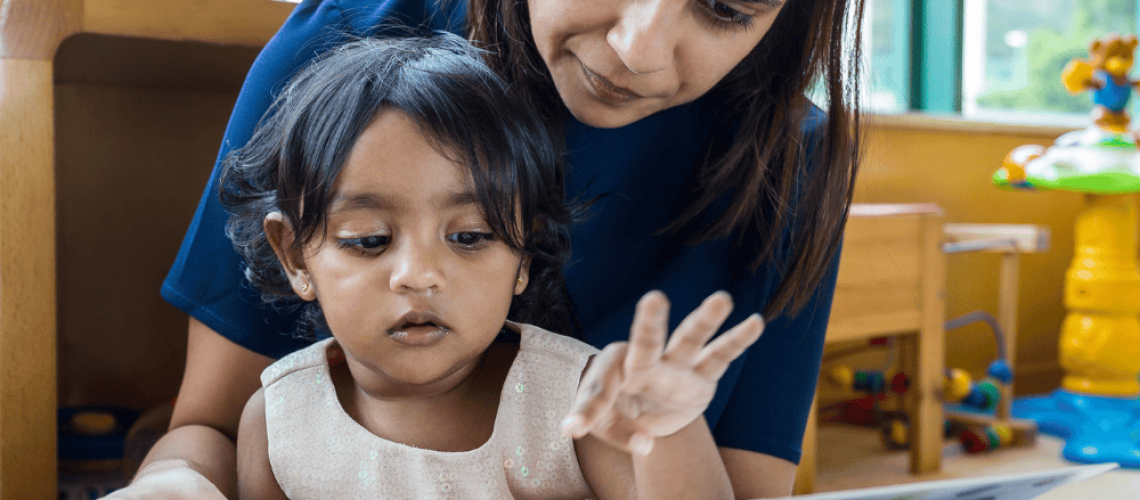Begin with a few minutes at a time. You don’t have to finish the whole story or read every page of a book. Let your child decide how much time they want to spend on reading, don’t force them. They may pay attention for only a few minutes and that’s alright. Make sure to be guided by your little one’s interest to not make reading a cumbersome task for them.
If you’re starting at zero years, be advised, your baby may want to put the books in their mouths. Let them, as it is part of the sensory experience and makes the process more meaningful. So go for sturdier options at this age. For toddlers, you can try books that will stimulate their developing senses & fine motor skills and grab their attention – books with textures, tabs & flaps and interactive elements. You can also try books with repetitive words and phrases. It’s okay to the same book over and over again like a familiar song.
At any age, the first step to start reading to your child is to build a positive environment – so turn off the TV, put your phone on silent and find a quiet space. You can even create a small reading area in your house with a variety of books available and a comfortable seating spot. Let your baby explore the books in the area during reading time or at other times. Next, set a time in the day to read – mealtime, bath time, nap or bedtime – whatever works for you.
Follow all these tips to make reading a pleasure and a gift:
- Show your child the cover pages of books and discuss what the story could be about. Let them choose a book to start with, you can help them too.
- Involve them in the reading process by asking your little one to turn the pages as you read. Try turning the pages slowly to give them time to look at pictures and talk about what they see.
- Run your finger along the words as you read from left to right, it will help them identify words.
- Make the story come alive with voices for different story characters. Use gestures, voice modulation and facial expressions – to engage your child, and help them understand the meaning of words and pictures.
- You can even talk or sing about pictures to get started. Introduce storytelling to your kid without reading words. If your child is old enough, they can even read the pictures to you!
- Try using story extension techniques like asking your child what will happen next. It will help your child understand, comprehend and connect with the book. You can even stop at the end of a sentence and allow them to continue the story.
- Make the reading process more personal by having a back-and-forth conversation with your child. Relate the book to familiar activities, people and objects in your child’s life. If your child is asking questions, it means they are taking an interest in the story, allow them to state their opinion on the book or story. Your child might not be at an age to converse, but doing this can lay the groundwork for later.
- Once you finish your reading session, talk about what happened. It can even be about just one page read that day, but it is important to know and understand what your child has taken away from the book or story.
If your child is little, try cuddling or bouncing them on your knee to make them feel safe, warm and connected to you during the reading process. Make sure your child can see the book and focus on your voice. When you start, there may be days when your child doesn’t want to spend a lot of time reading and that’s ok. Slowly you can increase the time and make it part of a routine.

